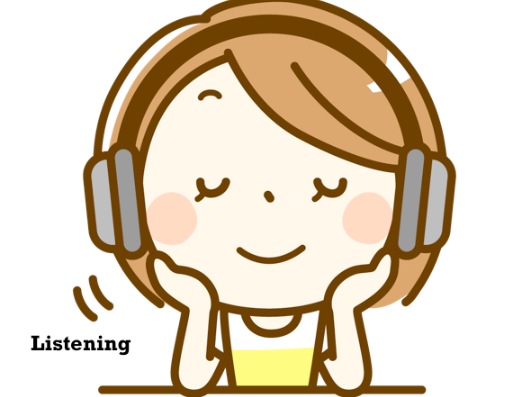Directions: In this part of the test, you will show how well
you can write a response to an e-mail. Your
response will be scored on
●the quality and variety of your sentences,
●vocabulary, and
●organization.
You will have 10 minutes to read and answer
each e-mail.
Directions: Read the e-mail below.
Lesson 1.
FROM: Manager of Greenfield Business Park
TO: All Employees
SUBJECT: Office Renovation Update
SENT: July 15
We are excited to announce that the office renovation will commence next month, starting August 5th. The work will primarily focus on the main lobby and the first floor. Please be prepared for minor disruptions and noise during office hours. We appreciate your patience and cooperation during this time.
Directions: Respond to the e-mail as an employee of Greenfield Business Park. In your reply, make ONE request and ONE question.
=====================================================
Lesson 2.
FROM: Head of Sales
TO: Sales Team
SUBJECT: Quarterly Sales Review Meeting
SENT: August 22
I’d like to remind everyone about our quarterly sales review meeting scheduled for September 1st at 10 AM. It’s essential that all team members attend as we will analyze last quarter’s performance, discuss targets for the upcoming quarter, and address any challenges faced. Please come prepared with your reports and insights.
Directions: Respond to the e-mail as a member of the sales team. In your reply, make ONE request and ONE question.
============================================================
Lesson 3.
FROM: Customer Service Manager
TO: All Customer Service Representatives
SUBJECT: New Training Program Introduction
SENT: May 18
We are excited to introduce a new training program focused on advanced communication skills, starting June 3rd. The program includes interactive workshops and role-playing sessions, designed to enhance our service quality. Participation is mandatory for all team members, and a schedule will be shared soon.
Directions: Respond to the e-mail as a customer service representative. In your reply, make ONE request and ONE question.
==========================================================
Lesson 4.
FROM: Operations Manager
TO: All Department Leaders
SUBJECT: Office Relocation Update
SENT: November 4
We’re nearing the final stages of our office relocation plan. A detailed move schedule will be shared next week. It’s vital that each department begins preparing their files and equipment for the move, scheduled for December 1st. Please prioritize this in your upcoming department meetings.
Directions: Respond to the e-mail as a department leader. In your reply, make ONE request and ONE question.
========================================================
Lesson 5.
FROM: Head of IT Department
TO: All Staff
SUBJECT: System Upgrade Notification
SENT: April 10
Please note that a major system upgrade is scheduled for next weekend, April 18-19. All company systems will be offline during this period. Ensure you save all necessary documents offline to avoid any work disruptions.
Directions: Respond to the e-mail as a staff member. In your reply, make ONE request and ONE question.
==========================================================
Lesson 6.
FROM: Facilities Manager
TO: All Employees
SUBJECT: Parking Lot Maintenance
SENT: August 1
Please be informed that the parking lot will be undergoing maintenance from August 10th to 15th. Alternative parking will be provided at the nearby Green Park area. Shuttle service to the office will be available.
Directions: Respond to the e-mail as an employee. In your reply, make ONE request and ONE question.
=======================================================
Lesson 7.
FROM: Human Resources Manager
TO: All Staff
SUBJECT: Annual Health Checkups
SENT: September 5
We are pleased to announce free annual health checkups for all employees on October 3rd. Please sign up by September 20th to secure your appointment. Participation is highly encouraged for your wellbeing.
Directions: Respond to the e-mail as a staff member. In your reply, make ONE request and ONE question.
============================================================
Lesson 8.
FROM: Office Administration
TO: All Employees
SUBJECT: Fire Drill Announcement
SENT: February 12
A mandatory fire drill will be conducted on February 25th at 11 AM. This drill is essential for ensuring workplace safety. Your full participation is required. Please prepare accordingly.
Directions: Respond to the e-mail as an employee. In your reply, make ONE request and ONE question.
=============================================================
Lesson 9.
FROM: Training Coordinator
TO: All New Hires
SUBJECT: Orientation Session
SENT: June 14
Welcome to the team! Please remember to attend the mandatory orientation session on June 21st at 9 AM in Conference Room B. The session will cover essential company policies and procedures.
Directions: Respond to the e-mail as a new hire. In your reply, make ONE request and ONE question.
==================================================
Lesson 10.
FROM: Project Manager
TO: Team Members
SUBJECT: Project Deadline Reminder
SENT: March 18
This is a reminder that the deadline for our current project is March 31st. Please ensure all your tasks are completed and submitted by this date for final review.
Directions: Respond to the e-mail as a team member. In your reply, make ONE request and ONE question.
=====================================================
Lesson 11.
FROM: Catering Manager
TO: All Staff
SUBJECT: Office Luncheon
SENT: April 4
We are organizing an office luncheon on April 20th to celebrate our company’s anniversary. Please RSVP by April 10th and mention any dietary restrictions.
Directions: Respond to the e-mail as a staff member. In your reply, make ONE request and ONE question.
====================================================
Lesson 12.
FROM: IT Support Team
TO: All Department Heads
SUBJECT: Network Upgrade
SENT: July 15
We will be performing a major network upgrade on July 25th, resulting in intermittent internet outages. Please ensure all critical work is saved offline.
Directions: Respond to the e-mail as a department head. In your reply, make ONE request and ONE question.
=========================================================
Lesson 13.
FROM: Marketing Director
TO: Marketing Team Members
SUBJECT: Upcoming Product Launch Meeting
SENT: October 5
Reminder: We’re holding a detailed meeting about the upcoming product launch on October 12th at 2 PM in the main conference room. Attendance is crucial as we’ll discuss marketing strategies and assign roles. Please review the preliminary plan sent earlier and come prepared with ideas and feedback.
Directions: Respond to the e-mail as a member of the marketing team. In your reply, make ONE request and ONE question.
===============================================
Lesson 14.
FROM: Wellness Committee Chair
TO: All Employees
SUBJECT: Health and Wellness Week
SENT: February 20
Next week is our annual Health and Wellness Week. There will be a variety of activities including yoga sessions, nutrition workshops, and stress management seminars. Please check the full schedule on the intranet and sign up for the sessions of your interest.
Directions: Respond to the e-mail as an employee. In your reply, make ONE request and ONE question.
==================================================
Lesson 15.
FROM: Chief Technology Officer
TO: All IT Staff
SUBJECT: Cybersecurity Training Session
SENT: October 10
We are conducting a mandatory cybersecurity training session on October 20th. This session will cover new protocols and threat prevention techniques. Your attendance is essential to ensure our network remains secure. Please confirm your attendance by October 15th.
Directions: Respond to the e-mail as an IT staff member. In your reply, make ONE request and ONE question.
=============================================================
Lesson 16.
FROM: HR Director
TO: All Employees
SUBJECT: Upcoming Health and Safety Training
SENT: September 5
We are conducting mandatory health and safety training on September 15th, focusing on emergency response and workplace safety protocols. Attendance is crucial. If you have prior commitments, please inform HR to arrange an alternative session. Stay informed and stay safe!
Directions: Respond to the e-mail as a new employee, unfamiliar with the company’s procedures. In your reply, ask TWO questions about the training and make ONE suggestion regarding accessibility of training materials.
======================================================
Lesson 17.
FROM: Facilities Manager
TO: All Staff
SUBJECT: Cafeteria Renovation
SENT: March 10
We are excited to announce that our cafeteria will undergo a renovation starting March 20th. During this period, the cafeteria will be closed. Alternative dining options will be provided in the adjacent building. We appreciate your understanding and cooperation during these improvements.
Directions: Respond to the e-mail as a staff member. In your reply, ask TWO questions about the alternative dining options and make ONE suggestion to enhance staff convenience during the renovation period.
===========================================================
Lesson 18.
FROM: IT Department Head
TO: All Employees
SUBJECT: Upcoming Software Update
SENT: May 2
Our company will be undergoing a significant software update next week. This will require all computers to be offline for approximately two hours on May 10th, starting at 3 PM. Please ensure all your work is saved before this time.
Directions: Respond to the e-mail as an employee. In your reply, ask TWO questions about the software update and make ONE suggestion for minimizing work disruption.
==============================================================
Lesson 19.
FROM: Corporate Communications Team
TO: All Staff
SUBJECT: Employee Satisfaction Survey
SENT: July 8
We’re conducting an employee satisfaction survey to better understand your experiences and identify areas for improvement. The survey is anonymous and takes approximately 10 minutes to complete. Please submit your responses by July 20th. Your feedback is vital for our continued growth.
Directions: Respond to the e-mail as an employee. In your reply, ask TWO questions about the survey and make ONE suggestion to encourage participation.
==============================================================
Lesson 20.
FROM: Project Manager
TO: Project Team
SUBJECT: Deadline Extension Request
SENT: September 18
Due to unexpected challenges, we are requesting a one-week extension for the project deadline. Please provide your input and feasibility assessment by September 22nd, and we will collectively decide on the new deadline.
Directions: Respond to the e-mail as a project team member. In your reply, make ONE request for additional information and ONE suggestion for managing the extended timeline.
========================================================
Lesson 21.
FROM: HR Manager
TO: All Employees
SUBJECT: Upcoming Company Picnic
SENT: June 10
Our annual company picnic is scheduled for June 25th at the Green Park. We’ll have food, games, and team-building activities. Please RSVP by June 18th, and let us know if you have any dietary preferences or restrictions.
Directions: Respond to the e-mail as an employee. In your reply, ask TWO questions about the picnic arrangements and make ONE suggestion to enhance the picnic experience.
============================================================
Lesson 22.
Sample E-mail
FROM: Marketing Manager
TO: Marketing Team
SUBJECT: Upcoming Product Launch
SENT: October 5
Our new product launch is set for October 20th. Please ensure all marketing materials are ready, and we’ll have a team meeting on October 15th to go over the final preparations. Your creativity and dedication are greatly appreciated.
Directions: Respond to the e-mail as a marketing team member. In your reply, ask ONE question about the product launch details and make ONE suggestion for promoting the new product.
=========================================================
Lesson 23.
FROM: Project Coordinator
TO: Project Team Members
SUBJECT: Client Meeting Preparation
SENT: December 3
We have an important client meeting scheduled for December 15th. Please ensure that all necessary documents and presentations are ready for review by December 10th. We need to make a strong impression.
Directions: Respond to the e-mail as a project team member. In your reply, ask ONE question about the client meeting and make ONE suggestion for a successful presentation.
===============================================================
Lesson 24.
FROM: HR Manager
TO: All Employees
SUBJECT: Holiday Office Closure
SENT: November 25
Our office will be closed from December 24th to January 2nd for the holiday season. Please ensure all pending work is completed before the closure, and make any necessary arrangements for remote access if required.
Directions: Respond to the e-mail as an employee. In your reply, ask ONE question about holiday procedures and make ONE suggestion for team coordination during the office closure.
===========================================================
Lesson 25.
FROM: Sales Manager
TO: Sales Team
SUBJECT: Upcoming Sales Presentation
SENT: February 12
Our next sales presentation is scheduled for February 25th. Please start preparing your pitches and presentations. We’ll have a team meeting on February 20th to discuss the details and practice our pitches.
Directions: Respond to the e-mail as a sales team member. In your reply, ask ONE question about the presentation logistics and make ONE suggestion to ensure a successful presentation.
=========================================================
Lesson 26.
FROM: Project Coordinator
TO: Project Team Members
SUBJECT: Project Update and Next Steps
SENT: April 15
We’ve made good progress on our project, and the next phase begins on May 1st. Please review the project timeline and be prepared for a team meeting on April 28th to discuss the upcoming tasks and responsibilities.
Directions: Respond to the e-mail as a project team member. In your reply, ask ONE question about the project timeline and make ONE suggestion to ensure smooth collaboration in the next phase.
=========================================================
Lesson 27.
FROM: Marketing Manager
TO: Marketing Team
SUBJECT: Marketing Campaign Launch
SENT: July 5
Our new marketing campaign is set to launch on July 20th. Please double-check all marketing materials and ensure they are error-free. We want to make a strong impression with this campaign.
Directions: Respond to the e-mail as a marketing team member. In your reply, ask ONE question about the campaign launch details and make ONE suggestion for maximizing the campaign’s impact.
=========================================================
Lesson 28.
FROM: HR Manager
TO: All Employees
SUBJECT: Employee Feedback Survey
SENT: September 10
We value your feedback! Please participate in our annual employee feedback survey, which will be open from September 20th to September 30th. Your input is essential in helping us make improvements. Watch for the survey link in your inbox.
Directions: Respond to the e-mail as an employee. In your reply, ask ONE question about the survey process and make ONE suggestion to encourage participation.
===========================================================
Lesson 29.
FROM: IT Department Head
TO: All Employees
SUBJECT: Scheduled Server Maintenance
SENT: December 15
We will be performing scheduled maintenance on our servers on December 28th, from 9 PM to 3 AM. During this time, there may be temporary disruptions in network access and email services. We apologize for any inconvenience.
Directions: Respond to the e-mail as an employee. In your reply, ask ONE question about the server maintenance and make ONE suggestion to minimize disruptions.
==========================================================
Lesson 30.
FROM: Sales Manager
TO: Sales Team
SUBJECT: Quarterly Sales Meeting
SENT: March 8
Our quarterly sales meeting is scheduled for March 20th. Please ensure all your sales reports are up-to-date and ready for presentation. We’ll have a team briefing on March 15th to prepare for the meeting.
Directions: Respond to the e-mail as a sales team member. In your reply, ask ONE question about the meeting agenda and make ONE suggestion for an effective presentation.
=================================================================
Lesson 31.
FROM: Postville Public Library
TO: All members
SUBJECT: Tryouts for a new play
SENT: September 14
The Postville Players will perform “Gate 34,” an original play written and directed by member Mary Wilson, the evenings of November 13 and 14 and the afternoon of November 15. Tryouts for the play will be held on Saturday afternoon, September 19, from 2:00 to 4:00 p.m. The play calls for five actors and seven actresses. Also, a chorus of 10 to 12 people and five or six backstage personnel are also needed. Rehearsals will be held weekday evenings.
Directions: Respond to the e-mail as someone who wants to appear in “Gate 34” or work backstage. Ask ONE question about the play and ONE about the rehearsals.
=============================================================
Lesson 32.
FROM: Marketing Manager
TO: All Employees
SUBJECT: Charity Run Participation
SENT: October 5
Our company will be participating in the annual Charity Run on November 15th. We encourage employees to join and contribute to a good cause. Registration details and team formation will be shared soon.
Directions: Respond to the e-mail as an employee interested in participating in the Charity Run. Ask ONE question about the event and make ONE suggestion for team formation.
===============================================================
Lesson 33.
FROM: Susan Chen, Community Outreach Coordinator
TO: Alumni of Greenfield College
SUBJECT: Annual Career Sharing Day
SENT: February 15
Dear Greenfield College Alumni,
We are excited to invite you to our Annual Career Sharing Day, scheduled for 10:00 a.m. to 12:00 p.m. on Saturday, March 20th, at the college auditorium. This event allows alumni to share their career experiences and insights with our current students. Each participant will give a ten-minute talk about their career journey, followed by a Q&A session. Your stories can significantly impact our students’ career choices and aspirations. We look forward to your participation.
Best regards,
Susan Chen
Directions: In your response, mention your occupation and brief job history. Also, make ONE request for additional information or clarification.
================================================
Lesson 34.
FROM: Laura Smith, Director of Innovation
TO: Research and Development Team
SUBJECT: Innovation Week Presentations
SENT: April 1
Dear Team,
We’re launching an “Innovation Week” from April 25 to April 29. It’s an opportunity for team members to showcase their current projects and innovative ideas. We encourage you to present your work. Please let us know if you’re interested in participating and what project you would like to present.
Best,
Laura Smith
Directions: In your response, express your interest (or lack thereof) in the initiative, provide a brief overview of your current project or work, and ask a question related to the initiative.
=====================================================
Lesson 35.
FROM: Emily Johnson, Project Manager
TO: Project Team Members
SUBJECT: Project Deadline Reminder
SENT: June 5
Team,
As a reminder, the deadline for the Phoenix Project is set for July 15. This timeline is crucial for our next phase. Please assess your current progress and let me know immediately if you foresee any challenges in meeting this deadline. Your prompt response is appreciated.
Regards,
Emily Johnson
Directions: In your response, mention whether you can meet the proposed deadline, explain briefly any challenges you foresee in meeting it, and request any additional resources or support you might need.
==============================================
Lesson 36
FROM: Thomas Green, Head of Marketing
TO: Marketing Department Staff
SUBJECT: Monthly Strategy Meeting
SENT: August 10
Dear Team,
Please save the date for our monthly strategy meeting on August 25 at 3:00 PM in the main conference room. This meeting is vital for discussing our Q4 marketing strategy. Let us know if you can attend and suggest any additional topics for the agenda.
Regards,
Thomas Green
Directions: In your reply, confirm your availability for the meeting, suggest one topic you think should be included in the agenda, and ask a specific question about the meeting’s arrangements.
=================================================
Lesson 37
From: Mark Borthwick
To: Simon Brown
Subject: Sales report deadlines
Sent: February 8, 8:59 A.M.
Dear Simon,
The accounting department has recently informed me that your sales reports have consistently been submitted after the deadlines. Please respond to this email with reasons as to why you have failed to meet the deadlines.
Regards,
Mark Borthwick
Regional Manager
Directions: In your email, provide TWO reasons for the issue mentioned and make ONE request.
======================================================
Lesson 38
From: Jane Dawson
To: Alex Martinez
Subject: Urgent Need for Project Update
Sent: July 15, 9:30 A.M.
Dear Alex,
I’ve noticed that there hasn’t been any update on the “Green Energy” project for the past two weeks. This is concerning as the project’s deadline is approaching. Could you please explain the reasons for this delay?
Best regards,
Jane Dawson
Project Coordinator
Directions: In your email, acknowledge the request, provide TWO reasons for the current situation, and suggest ONE possible solution.
===========================================================
Lesson 39
From: Lisa Nguyen
To: Department Heads
Subject: Quarterly Planning Meeting
Sent: March 3, 10:00 A.M.
Dear Department Heads,
Please be reminded of our upcoming quarterly planning meeting scheduled for March 10 at 2:00 PM in the main conference hall. We will discuss our strategies and goals for the next quarter. Let me know if you have specific topics to add to the agenda.
Best regards,
Lisa Nguyen
Chief Operations Officer
Directions: In your reply, confirm your attendance, mention one specific topic you would like to discuss, and ask a question regarding the meeting logistics.
================================================
Lesson 40
From: Emily Roberts
To: All Staff
Subject: Printer Malfunction in Office
Sent: May 20, 11:30 A.M.
Dear Team,
We’ve noticed recurring issues with the main office printer. It often jams and is causing delays in document processing. We’re looking for suggestions on how to address this problem. Please share your ideas.
Best,
Emily Roberts
Office Manager
Directions: In your reply, acknowledge the issue, offer two potential solutions, and ask for feedback on your suggestions.
============================================
































































































